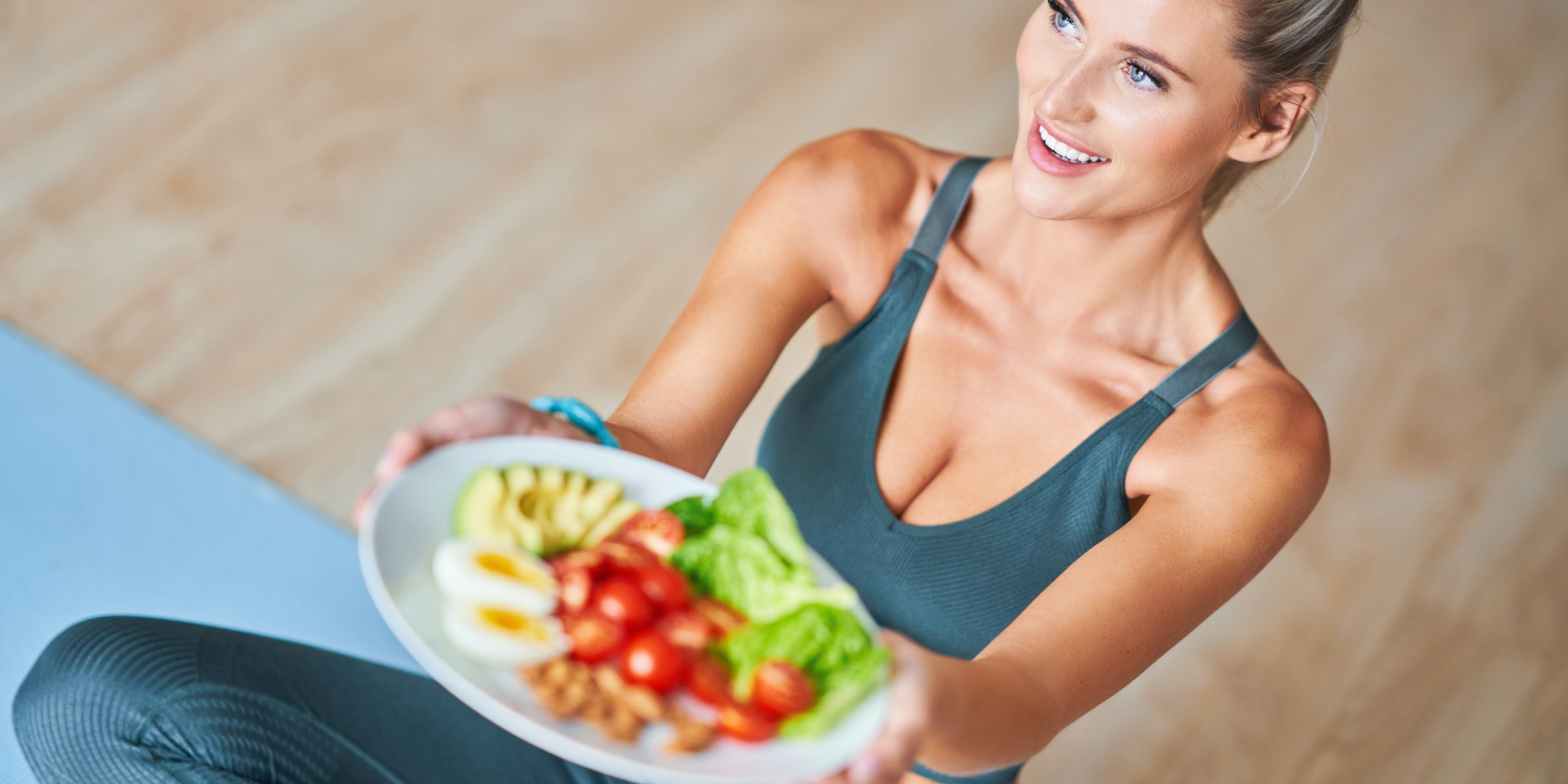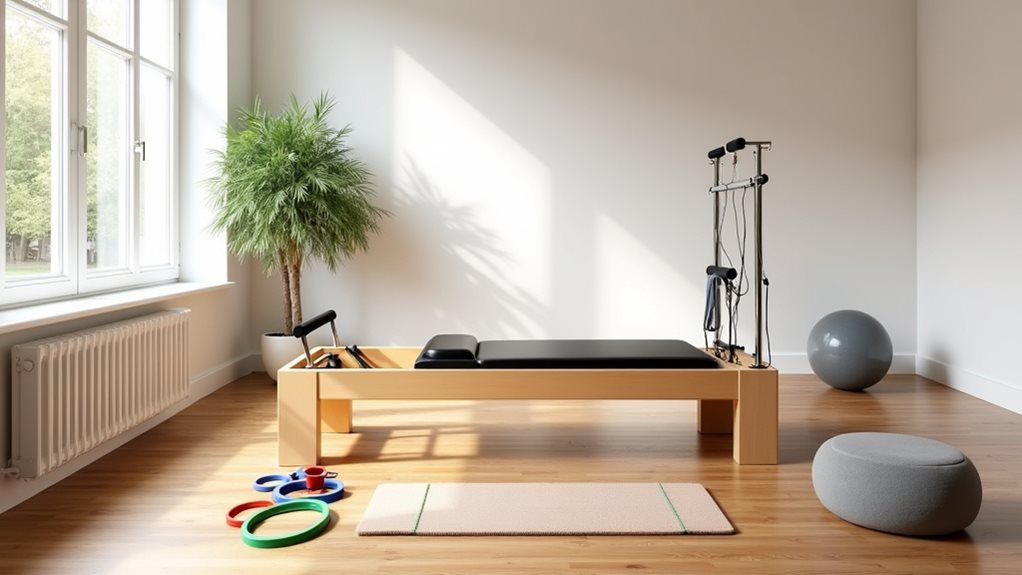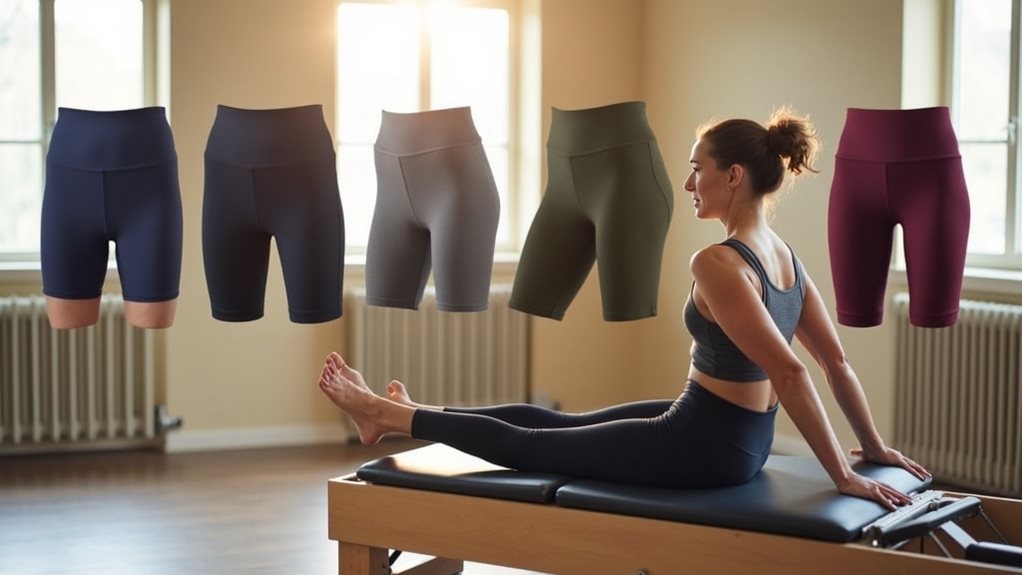In the intricate dance of our body’s systems, the harmony between movement and well-being often goes unnoticed. Many are familiar with the euphoria that follows a heart-pumping run or the relaxation stemming from a deep yoga stretch. Still, few consider movement’s quieter, profound impacts on our innermost workings.
Pilates strengthens core muscles, enhances circulation, and promotes deep breathing, aiding digestion. Regular practice can stimulate the gastrointestinal system, potentially reducing bloating and constipation and supporting overall digestive health.
As we delve deeper into physical exercise and its influence on our bodies, an unexpected protagonist emerges, Pilates, with the potential to sculpt muscles and nurture our digestive system. Join us as we uncover the lesser-known bond between Pilates and a healthy gut.
Breathing Techniques: Oxygenating the Digestive System
Breathing is one of our most fundamental actions, often without much thought. Yet, it holds the power to influence multiple facets of our well-being. Specifically, in the context of Pilates, the emphasis on conscious breathing techniques is paramount. But beyond promoting relaxation or aiding in muscle contraction, did you know that these deliberate inhalations and exhalations can profoundly impact the digestive system?
- Deep Breathing in Pilates:
- Involves filling lungs fully and exhaling in a controlled manner.
- Oxygenates blood, benefiting overall body function.
- Diaphragm’s descent massages abdominal organs like the liver, stomach, and intestines.
- Stimulation of Digestive Organs:
- Breathing promotes movement within the digestive tract.
- Assists in pushing waste products.
- Enhances breakdown of food, optimizing nutrient absorption.
- Oxygen’s Role in Digestion:
- Vital for cellular function within digestive organs.
- Cells in the stomach, intestines, and liver need oxygen to produce energy.
- Supports functions like digestion, absorption, and detoxification.
- Stress Reduction:
- Proper breathing activates the parasympathetic nervous system.
- Reduces stress, a known disruptor of digestion.
- Activates ‘rest and digest’ response, promoting efficient digestion.
- Holistic Benefits:
- Focusing on breathing enhances mental and physical health.
- Incorporating Pilates breathing techniques can improve the quality of life by supporting digestive health.
Pilates Movements: Stimulating Gastrointestinal Activity
Pilates, a physical fitness system developed in the early 20th century by Joseph Pilates, is known for its focus on core strength, flexibility, and balance. While many appreciate it for its toning and posture-correcting benefits, there’s another dimension to Pilates that often goes unnoticed: its potential to stimulate and support gastrointestinal activity.
The series of controlled movements and postures in Pilates directly engage the abdominal muscles. This engagement goes beyond just toning; it also creates a gentle massage-like effect on the organs within the abdominal cavity. Here’s how:
- Spinal Flexion and Extension: Movements such as “The Saw,” “The Cat Stretch,” and others that involve flexion and extension of the spine also move the organs within the abdominal cavity. This mobility aids in the gentle movement of food along the intestines, potentially assisting with elimination and reducing constipation.
- Twisting Movements: Exercises like “The Corkscrew” or “Spine Twist” involve rotational motions of the torso. These actions wring out the organs, much like a cloth, which can help stimulate circulation and the movement of waste products.
- Leg Movements: Actions involving the legs, like “Scissors” or “Leg Circles,” indirectly engage the lower abdominal muscles. This engagement can stimulate the lower part of the intestines and promote bowel activity.
- Pelvic Movements: Exercises that focus on pelvic mobility and stability, such as “Pelvic Clock” or “Bridge,” profoundly affect the organs in the pelvic cavity. These movements can assist in relieving bloating and gas.
- Deep Breathing: While breathing is integral to all Pilates exercises, its effect is not limited to oxygenation. The diaphragmatic movement pushes and pulls on the stomach and intestines, promoting motility.
By integrating these exercises into a routine, individuals can harness the benefits of Pilates for more than just muscle toning or flexibility. When done consistently and correctly, the movements can provide a holistic approach to health, aiding in smoother digestion and alleviating some common gastrointestinal discomforts.
Alleviating Digestive Ailments: From Bloating to Constipation
Digestive ailments, ranging from occasional bloating to persistent constipation, are common concerns many individuals grapple with. While diet and hydration play crucial roles in digestive health, physical activity, particularly exercises like Pilates, can be instrumental in alleviating these issues. Let’s explore how Pilates can serve as a complementary approach to mitigating digestive discomforts.
- Bloating:
- Bloating often arises from trapped gas or sluggish food movement through the digestive tract.
- Pilates exercises that involve twisting and deep breathing can help release trapped gas, providing immediate relief.
- The massaging effect of certain Pilates movements on internal organs can enhance digestion, reducing bloating.
- Constipation:
- Regular bowel movement is essential for expelling waste products and avoiding discomfort.
- Pilates exercises that engage the lower abdominal muscles and those focusing on pelvic mobility can stimulate bowel activity, promoting more regular eliminations.
- The improved blood flow to the abdominal organs from consistent exercise can also support better intestinal function.
- Acid Reflux and GERD:
- Conditions like acid reflux, where stomach acid backs up into the esophagus, can be exacerbated by poor posture and weak diaphragmatic function.
- Pilates’ emphasis on posture and core strengthening can lead to a better-aligned digestive tract, reducing instances of reflux.
- Deep breathing exercises in Pilates can also strengthen the diaphragm, providing better separation between the stomach and esophagus.
- General Digestive Health:
- Pilates not only focuses on specific movements and holistic well-being, including relaxation and stress reduction.
- Stress is a known culprit in many digestive issues. By promoting relaxation, Pilates can indirectly support a healthier digestive system.
- The holistic approach of Pilates, emphasizing mindfulness and body awareness, can make individuals more attuned to their bodies, helping them identify and address digestive discomforts early on.
Incorporating Pilates into one’s routine offers a multifaceted approach to digestive health. While it should not replace medical interventions or dietary changes recommended by healthcare professionals, it can support achieving and maintaining a healthy digestive system.
Integrating Pilates into Daily Life for Optimal Gut Health
Integrating Pilates into daily life can provide a host of benefits, with one of the less commonly discussed advantages being the promotion of optimal gut health. By fostering a stronger core, improving circulation, and facilitating a mindful connection between the body and mind, Pilates offers a holistic approach to digestive wellness. Here’s a guide on weaving Pilates into everyday routines for a happier, healthier gut:
- Morning Stretch & Deep Breathing:
- Begin the day with a few minutes of Pilates-inspired stretches.
- Incorporate deep breathing to awaken the digestive system. This can jumpstart metabolism and promote bowel movement, especially when combined with movements that massage the abdominal area.
- Posture Checks Throughout the Day:
- Regularly check and correct posture, especially if working at a desk or spending extended periods seated.
- An upright posture reduces compression of the digestive organs, allowing them to function efficiently.
- Mini Breaks for Movement:
- Take a short break every hour or so, especially if your job is sedentary.
- Engage in Pilates exercises like pelvic tilts, spine twists, or leg stretches to stimulate the abdominal region.
- Mindful Eating & Awareness:
- Use the mindfulness cultivated in Pilates to eat with awareness. Slow down, chew thoroughly, and savor every bite.
- This can enhance digestion, reduce overeating, and help identify foods that might cause discomfort.
- Evening Wind-down with Relaxation Techniques:
- Dedicate 10-15 minutes for Pilates relaxation exercises in the evening.
- Focus on deep breathing and gentle stretches to relieve any tension in the abdominal area, promoting optimal overnight digestion.
- Stay Hydrated:
- While hydration is vital for everyone, those practicing Pilates should be especially mindful due to increased muscle activity.
- Adequate water intake supports digestion, making nutrient absorption more efficient and preventing constipation.
- Regular Full-Length Pilates Sessions:
- Besides short daily practices, incorporate 2-3 full-length Pilates sessions weekly.
- These sessions can further engage the core, enhance flexibility, and improve gut health over time.
Making Pilates a consistent part of one’s lifestyle becomes more than just a form of exercise—it becomes a way to nurture and support the body’s internal systems. Over time, these small integrations can significantly improve gut health and overall well-being.
Sources:
https://complete-pilates.co.uk/pilates-boost-digestion/
https://www.stylist.co.uk/fitness-health/workouts/pilates-for-gut-health/716880




